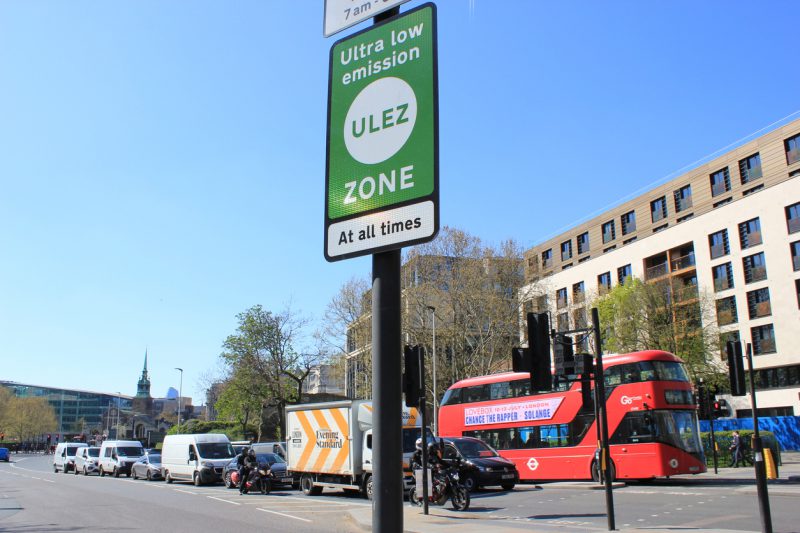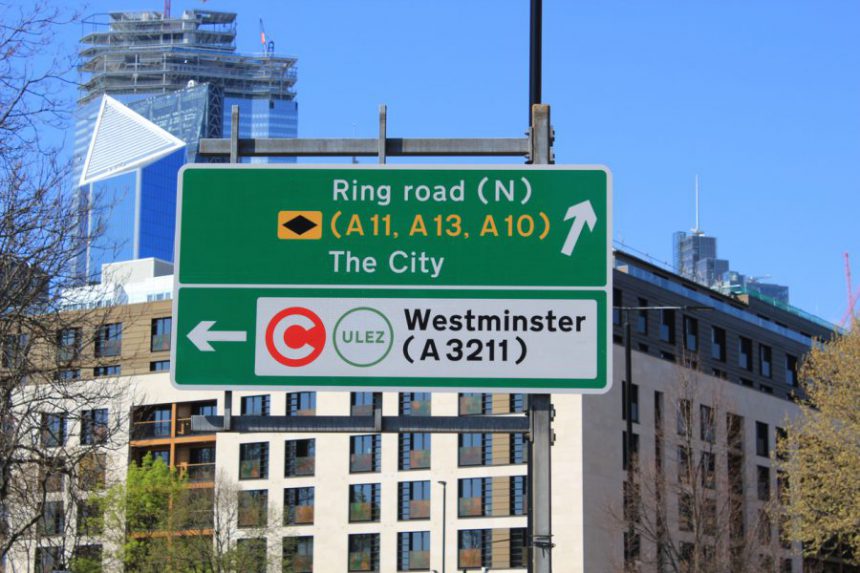
You might have heard of London’s Ultra Low Emissions Zone. But depending on where you live in the country, you’re more likely to have a Clean Air Zone (CAZ) coming to a city near you this year. We investigate what these are, what they mean to car drivers and reveal which cities are getting them in 2022.
What are Clean Air Zones?
The CAZ, sometimes called a Low Emissions Zone is a defined area in a city where harmful emissions from vehicles are strictly policed.
The local authority does this using Automatic Number Plate Recognition (ANPR) cameras. These work in tandem with the Driver and Vehicle Licensing Agency (DVLA) computers to recognise the official exhaust emissions rating of vehicles.
Those with the highest levels of polluting emissions then have to pay a fee to drive in the CAZ. The aim is to improve air quality and ultimately encourage drivers and companies to use cleaner vehicles.
What are the different Clean Air Zones?
There are four different classes of CAZ, labelled A to D. Each targets different types of vehicles. They start with class A and get progressively stricter.
| Class | Vehicle type |
| A | Buses, coaches, taxis, private hire vehicles |
| B | Buses, coaches, taxis, private hire vehicles, heavy goods vehicles |
| C | Buses, coaches, taxis, private hire vehicles, HGVs, vans, minibuses |
| D | Buses, coaches, taxis, private hire vehicles, HGVs, vans, minibuses, cars* |
What do CAZs mean for drivers?
This depends on the CAZ and the kind of car you have. Most will charge cars that have a pre-Euro 6 emissions rating for diesel and pre-Euro 4 for petrol cars. That’s cars built before September 2015 and September 2009 respectively. Some are less strict, only penalising pre-2005 petrol models.
Charges vary depending on which CAZ you drive in. Non-compliant cars in London’s £12.50 a day Ultra Low Emissions Zone once a week will cost a driver £650 a year. And there’s no discount if you live within the zone.
Greater Manchester will charge £60 a day for non-compliant buses, coaches and HGVs, £10 a day for vans and minibuses and £7.50 a day for taxis.
Meanwhile in Birmingham, it costs £50 a day for non-compliant buses, coaches and HGVs and £8 daily for private cars, taxis and light commercial vehicles.
Some local authorities give drivers who live within the zone a year’s grace so they can buy a compliant car.

Where are Clean Air Zones in the UK?
Portsmouth (class B), Bath (C), Birmingham (D), York (A+ [buses only]) and Glasgow (A+) already have Clean Air Zones in place. Various cities are set to join them in 2022. But not all CAZs will charge car drivers for entering them. Many are only class B, targeting buses, coaches, taxis and HGVs.
Where are Clean Air Zones coming?
Cities slated to launch a CAZ at some point in 2022 include Bristol (D), Bradford (C+), Greater Manchester (C+), Newcastle (C) and Sheffield (C). And Oxford is piloting a Zero Emissions Zone where it will charge any vehicle that isn’t electric to enter.
In Scotland there will be new CAZs in Aberdeen, Dundee and Edinburgh. These will be class D so apply to regular cars as well as commercial vehicles. The CAZ in Glasgow is being uprated to include cars from 2023.
And of course in London
The capital’s Ultra Low Emissions Zone (ULEZ) £12.50 charge applies to non-compliant cars, motorcycles, scooters, vans and minibuses. It doesn’t apply to HGVs and buses but these must pay up to £300 a day if they don’t comply with London’s Low Emissions Zone.
The ULEZ now takes in the Greater London area and operates 24/7, 365 days a year. According to Transport for London’s estimates, the ULEZ will bring in around £2 million per day in revenue.
On the plus side for drivers, a report commissioned by London’s City Hall predicts that the ULEZ could see 300,000 fewer people developing chronic diseases such as asthma by 2050 than otherwise predicted.
Lent my car to a so called mate 2 days…… I got hit with 2 x £80 fines for ulez……. Piss take if its only £12.50 a day
It’s just an excuse to raise more money for Councils to spend. Manchester’s zone covers 400+sq miles as it takes in chunks of all ten Boroughs around the city.
There’s no mention of which vehicles are examples from these changes like hibridge vehicles are they examples or electric vehicles are examped
Hello, I drive a 2002 Lexus ls430, and it runs great on lpg, do the rules apply to me. Peter
Just a money raising rip off of motorists
This is so unfair I understand people having to pay if it’s not necessary to drive into these cities but trades people taxis buses and emergency services should not be charged the simplistic way to me to lower the emissions is to not allow any vehicle in An unnecessary journey should have a park and ride service It’s ridiculous we keep hearing we need people to return to work in London tourists etc but we haven’t got the infrastructure rather than encouraging people to visit they are being put off by the price to visit London What about the people who live there they are not all going to be able to afford electric cars or pay the emissions charges surely there is a better solution we always seem to do things in this country upside down encouraging people to buy electric cars great But look how expensive they are your ordinary jo blog wouldn’t be able to afford one and as for repair we haven’t enough techs to repair them people have to drive miles to get to garages should have trained techs to repair before we encouraged people to buy electric cars why can we not convert our own petrol and diesel to electric….?
My car is an 8 in the number plate so l am assuming if l go into a C section l will be fine ?
You’re having a bubble
Easy – Shop somewhere else – Give them a totally empty town, no viable shops, no buses, no taxi.
Good information. Thank you
Seems a bit daft to be penalising buses before cars. surely we should be encouraging public transport, not making it more expensive to use?